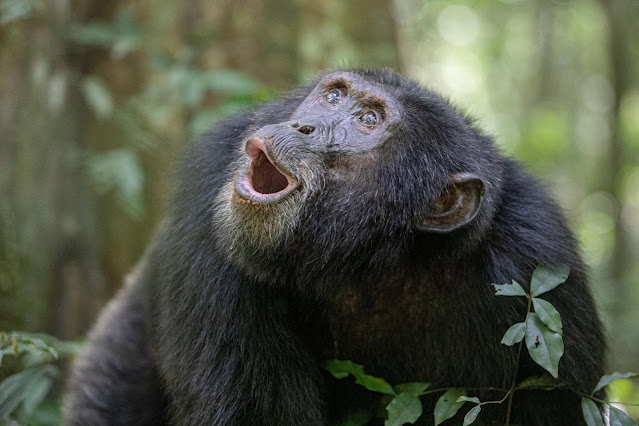I have been thinking how lucky I was to make a trip to Uganda last fall, and now that we are in the midst of additional restrictions and consequences due to the Omicron variant of Covid, I am even more appreciative! I was one of seven people, including our guide, to make the trip, which packed into twelve days visits to Kibale, Queen Elizabeth and Bwindi Impenetrable Forest National Parks. I'll cover Kibale National Park and its chimpanzees in this post, and follow up with additional posts on the other parks.
We spent three days in Kibale with the chimpanzees. I should note that these were all habituated chimpanzees, meaning that the group and individuals have become accustomed to the presence of humans. Information on habituation is available through the Jane Goodall Center.
After a short introduction to the park by the rangers we were each assigned a porter to carry our camera gear. The latter is optional, but highly recommend as it made our day easier and pleasanter and contributed to the local economy. Generally several rangers scout chimpanzee locations ahead of time so visitors don't have to spend a lot of time tramping around in the rain forest in search of them. Still, we walked from one to three miles each day to reach the group we would be observing, and then since chimpanzees often travel throughout the day we walked several more miles observing them. We had three hours with our assigned family each day, starting from the time we first came within sight of them, so we saw all kinds of behaviors.
In the mornings the chimpanzees were up in the trees, having spent the previous night in a tree nest made for sleeping.
Eventually they clambered down to the forest floor where they spent a good part of the day.
grooming,
and traveling.
We heard and saw all kinds of communications, including pant-hoots,
drumming on trees, which makes an incredibly loud, percussive sound, screeching, and running around waving large sticks. We were allowed to record their sounds, but not allowed to replay them while in the forest to avoid sending confusing signals to the chimpanzees.
Relationships among chimpanzees are fascinating to watch. As with most species, mother-infant bonding is strong and the expressive faces of youngsters make them particularly heart-warming to observe. Here is a darling face to love!












